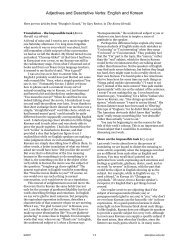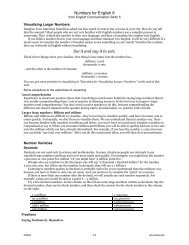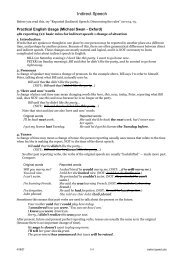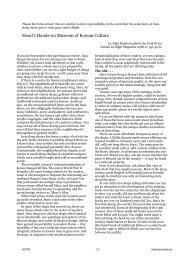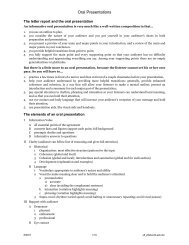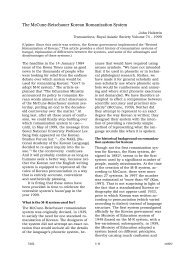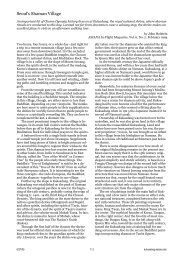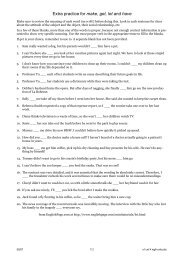Create successful ePaper yourself
Turn your PDF publications into a flip-book with our unique Google optimized e-Paper software.
members have half-face masks (brown for the boys, white for the girls) hanging<br />
around their necks, which they wear when they are on stage but not involved in the<br />
scene being played.<br />
Other Styles of Performance<br />
When the stage is ample — as it was for the 1988 Olympics production or the downtown<br />
Seoul version that preceded it — many more choices of style may be<br />
made. The half-face masks become less necessary, and the costumes of singing<br />
chorus or dancing chorus may be more varied, with choruses changing costume for<br />
different roles instead of posing as an acting company in the Commedia dell’arte<br />
style. It is probably valuable to keep intact the “Overture Scene,” where melodies<br />
are identified with certain characters, because that is all brought back in the finale.<br />
It will also give non-<strong>Korea</strong>n viewers a chance to catch up with the <strong>Korea</strong>ns in the<br />
audience, who begin with total familiarity with the play.<br />
William Cleary<br />
Afterword<br />
This pansori was probably the most popular of all the pansori, and even the Confucian<br />
yangban aristocracy enjoyed it. The yangban should not even have known<br />
about it, since pansori was fashioned and performed mostly by society’s lowest<br />
class, and it was considered beneath the attention of a Confucian literati. 2 In fact, it<br />
was even performed in the royal court. There are two possible reasons that Confucians<br />
appreciated the story, and they both derive from the five principles governing<br />
human relations that Confucius established. One principle was the proper relationship<br />
between husband and wife, which extends to all men and women: Woman is<br />
subject to man. Chun Hyang adhered to this principle admirably. Her refusal to<br />
obey Byon Satdo’s order to make herself available to him was, on the surface, an act<br />
of insubordination to a man; she did this, though, in order to honor a previous and<br />
more noble commitment to another man, her husband.<br />
Still, it’s difficult to imagine how a straightlaced Confucian could tolerate a story<br />
that condoned the idea of a yangban (Mong Yong) consorting with the daughter of a<br />
gisaeng, a member of society’s lowest class. The gisaeng served a double purpose, to<br />
entertain men (a good gisaeng was highly talented in the arts that Confucian gentlemen<br />
appreciated) and to satisfy their appetite for female company. A yangbangisaeng<br />
relationship that reflected the gisaeng’s dual function was considered<br />
proper; if any hint of romantic love appeared, however, the relationship would be<br />
considered improper. Since this happened in our story — and worse: they married<br />
— we are back to the question of why Confucians appreciated this story.<br />
The answer to this question may lie in another of the five principles, the one that<br />
defined the proper relationship between subject and ruler (in <strong>Korea</strong>, the ruler being<br />
any yangban). Of course, the subject is supposed to be loyal and obedient to the<br />
ruler. But there is another side to this principle: the superior also has an obligation<br />
to care for the inferior. Byon Satdo violated this principle, and any good Confucian<br />
yangban would condemn him for this. In our story, justice was served. So it is possible<br />
that the story’s victory of the two principles — a woman’s obligation to her<br />
A Yang for Every Yin 216




